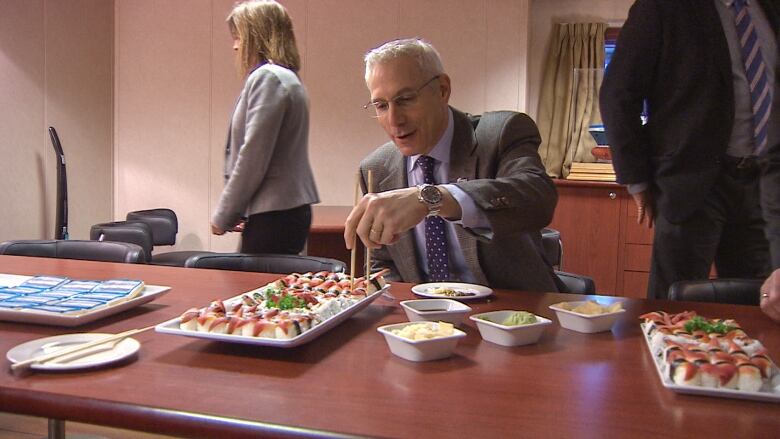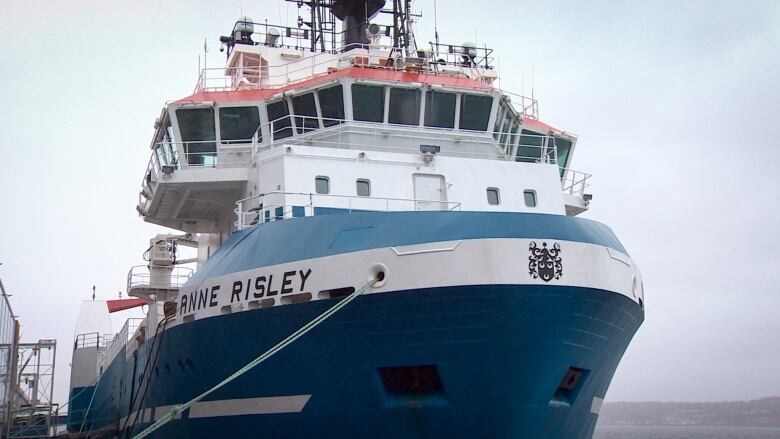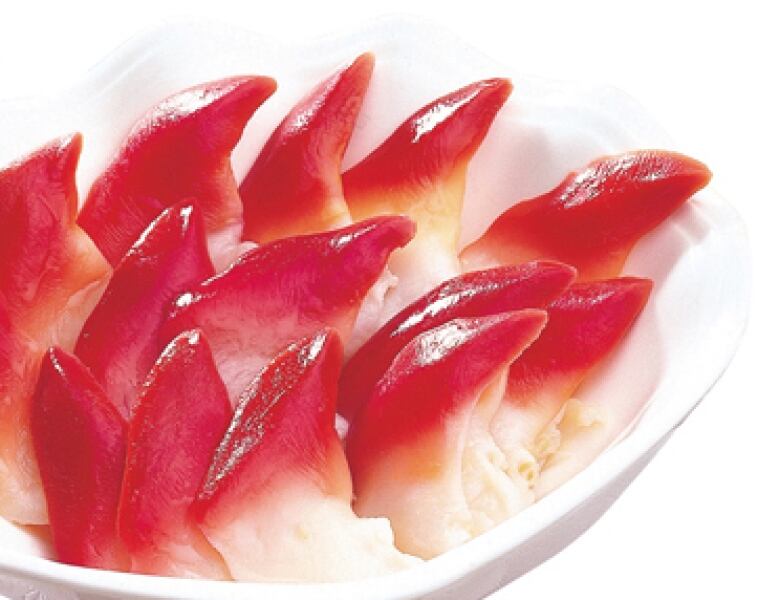$70M floating factory will harvest tongue-shaped N.S. clams for Asian sushi
Clearwater Seafoods shows off the Anne Risley as it prepares to face first competition for Arctic surf clam

Halifax-based Clearwater Seafoods showed off the latest addition to its offshore fishing fleet Friday:a new $70-million Arctic surf clam vessel.
Named after co-founder John Risley's late mother,the Anne Risley is a floating factorydesignedto harvestthe bright red, tongue-shaped seafood sold for sushi in Asia.
The vessel christening, media and dignitary tours comeas the company faces its firstcompetition for quota in the lucrative fishery it pioneered.

"We've been in this fishery as a company for close to 25 years or more.I cannotimagine that a company starting on Day 1will be able to get to where we arequickly," saidCEO Ian Smith.
"It would be hubris for us to suggest we are the only ones who know how to do anything. But we think we know a lot about how to catch and process clams and how to market them and distribute them globally," Smith told CBC News.
When Clearwater began its $70-million conversion of a Norwegian supply ship in 2016, it held 100 per cent of Canada's offshore surf clam quota.
Indigenous industries to get 25% of quota
The company landed 38,756 tonnes last year,mostly from Banquereau Bank off Cape Breton. Surf clams accounted for the vast majority of $91 million in revenue generated from clams.
But the Clearwater monopoly ended in September when the Department of Fisheries and Oceans announced it will give 25 per cent of that quota to a yet-to-be-determined Indigenous enterprise.
"If you look at it on a short-term basis from a value standpoint, we're losing 25 per cent of the quota we currently hold. We choose not to look at this on a short-term basis," Smith said.

"We think over the long term we gain from having an operation where we continueto work with a partner that is committed to the long-term success of the fishery."
Clearwater has teamed up as an operating partner with Nova Scotia's 13 Mi'kmaq bands, who have entered the competition for a quota worth around $20 million a year.
Smith declined to disclose what Clearwater will make under its arrangement, should the Mi'kmaqbe awarded the quota.
"It would be a 100 per cent Mi'kmaq-owned licence. They have chosen us because of what you see around you: over 25 years of R and D [research and development], innovation, investment in science and technology," Smith said.
"They see this as a tried-and-true model for success where you partner with industry that has the experience and expertise. You get to generate income off your licence holding almost immediately."
From swimming to frozen in an hour
Indigenous groups from Quebec, New Brunswick and Newfoundland and Labrador have partnered with St. John's-based Oceans Choice International.
Three Indigenous groups from Newfoundland and Labrador have teamed up with Cooke Seafood of New Brunswick for their application.
The Anne Risley is 73 metres long with a cavernous 450-tonne hold.Clams will go from ocean bottom to shucked, cleaned, cooked and frozen within an hour.

Cape Sable Island native Kevin Swimm is one of two captains of the vessel, which will be based in Mulgrave, N.S.
"It's not like when I started years ago. We'd drop a board down with Banquereau Bank on it and throw a dart at it to see where we weregoing," Swimm saidwith a laugh.
He said Clearwater has invested in bottom mapping and better equipment since then.
The ship has multi-beam sonar that looks forward and allows the ship to look sideways to check the bottom. The ship, with a crew of 74,will make its first fishing trip later this month. It will be primarily a shakedown cruise, or performance test.
Smith expects Ottawa to decide which Indigenous group is awarded the quota later this month.












_(720p).jpg)


 OFFICIAL HD MUSIC VIDEO.jpg)
.jpg)



























































































